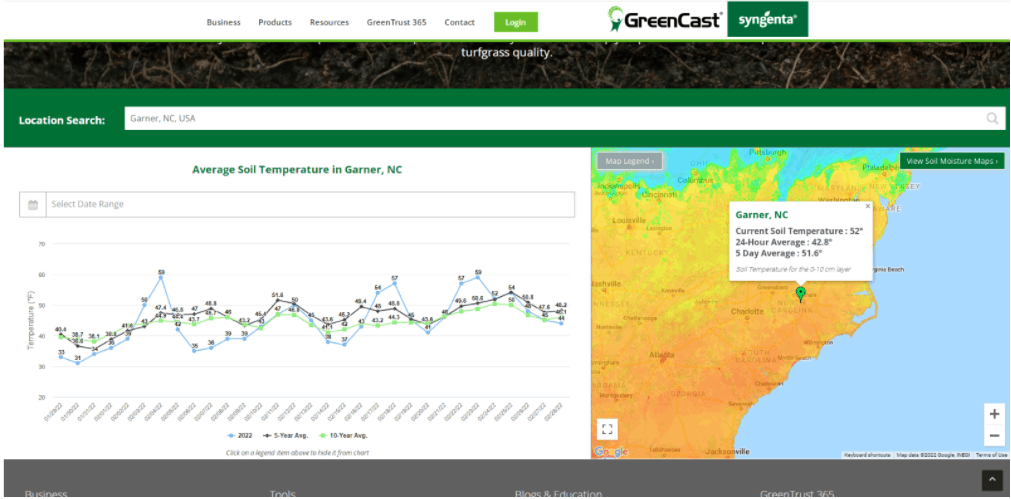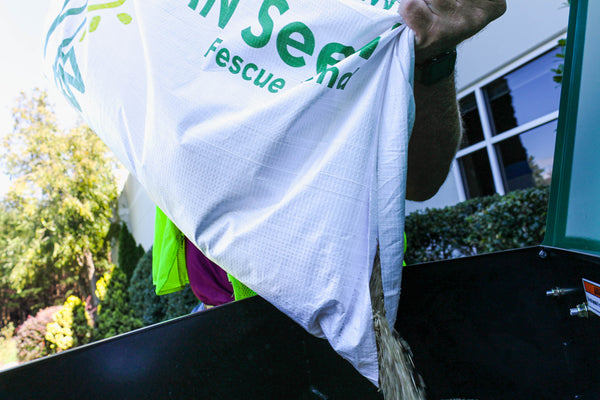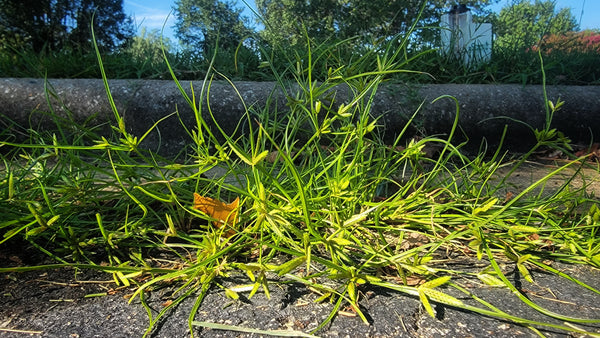Understanding Soil Temperatures and When to Apply a Pre-emergent: Using Syngenta’s Greencast
As the old saying goes, pre-emergents need to be applied by the time the forsythia blooms. While this might be a good rule of thumb, what is the science behind when to apply a pre-emergent? Monitoring soil temperatures is the key.
The reason a lot of people use the forsythia plant as a reference point is it starts blooming once the soil temperature reaches about 50-55 degrees Fahrenheit. Once the soil temperature reaches 55 degrees Fahrenheit, many weeds, including crabgrass, start germinating from dormant seed.
Since crabgrass and other weeds cause competition issues in turfgrass, pre-emergents are applied to control these undesirable plants. But with anything lawn related timing is everything.
How to Tell When Soil Temperature Is Close to 55 Degrees Fahrenheit?
Unlike basing it off the forsythia, there are programs that you can monitor for daily soil temperatures in your specific area. These programs are life savers for being prepared and ahead of the spring pre-emergent timing.
The best program for monitoring the soil temperatures is Syngenta’s GreenCast Soil Temperature Maps. With many locations all over the United States, it is accurate and should have a station close by where you live.
You can go to GreenCast Soil Temperature Maps here:
https://www.greencastonline.com/tools/soil-temperature
Once you are on the site you can type in your location at the Location Search bar. Put in your exact location and it will pull data from the closest testing location. 
The graph on the left shows the recent soil temperature highs in your area, along with a 5-year average and a 10-year average. This chart is helpful with determining when your location tends to be over a few years average.
On the right is a map that gives you the current average soil temperature along with a 24-hour average and a 5-day average. The 5-day average is the most important temperature to watch.
Here at our location, soil temperature is at the perfect temperature for seeds to start germinating. This does not mean that if you were to apply a pre-emergent say a few weeks late, it would not do anything, but rather right now is the ideal time to have a pre-emergent down for the best possible control.
Preparing to Apply a Pre-emergent
Another feature of GreenCast Soil Temperature Map is that you can look at averages in the future to determine when you should have your pre-emergents out. GreenCast system can forecast 8 days from the time you are looking at it. You can select this by clicking on the calendar on Select Date Range.

Or if you want to look at the past around this time last year, you can go back to those dates. In our example, GreenCast can predict what the soil temperatures will be over the next 8 days for our area based on future weather conditions. This may not be completely accurate but will be a good estimate to base your applications on.

Turf researchers suggest that seeds germinate at an average of 55 degrees Fahrenheit for 5-7 days. With soil temperatures ranging in our example from 50 degrees to 63 degrees, I would want to already have my pre-emergent down or be putting it down this week to keep seeds from developing.
As mentioned in the earlier blog about What is a Pre-emergent, Dimension can kill plants in young stages after they have germinated. If you figure out that you are late for a pre-emergent, but still have weeds, like crabgrass, at a young stage of life, it might not be too late for Dimension.
Weather conditions also play a big part in deciding on when to do a pre-emergent. Some years the winter might have a warm spell that can heat up the soil temperature to the point of crabgrass germination. But in cases like these, colder weather and frost will return before Spring comes.
Prepare for Pre-emergent Season with Confidence
Tools like Syngenta’s GreenCast Soil Temperature Maps are helpful when preparing to apply a pre-emergent. Using a tool like this will help you stay on top of your lawn and help keep unwanted weeds out of undesirable areas.
Soil temperatures are based on ground temperature at the testing site which might be different than your exact area. Keep in mind that areas closer to concrete, asphalt, brick, and other objects that draw and reflect heat will be warmer.
Being prepared is the best way to stay on top of your lawn!
Need some Pre-emergents?
We have you covered.
Check out our whole list of pre-emergents that we sell on our website here:
https://www.lawnandpestcontrolsupply.com/collections/weed-preventer?page=1
Or below are links to the products mentioned in this post:
GreenCast Soil Temperature Maps- https://www.greencastonline.com/tools/soil-temperature
Sources:
Want to stay update to date with the latest at L&PC? Join our others who get the best DIY info on our monthly newsletter here: L&PC Guide to DIY




